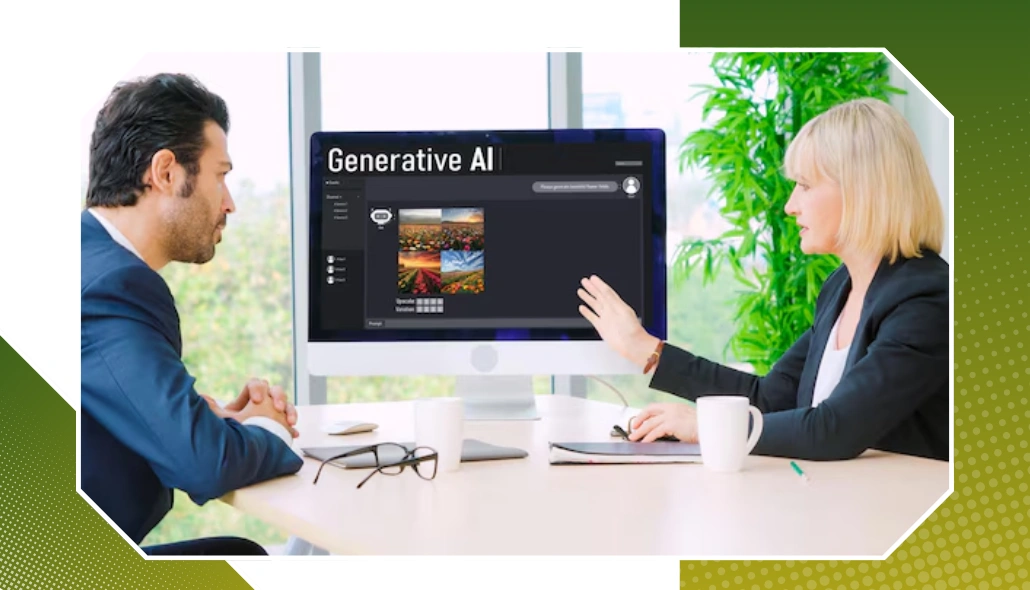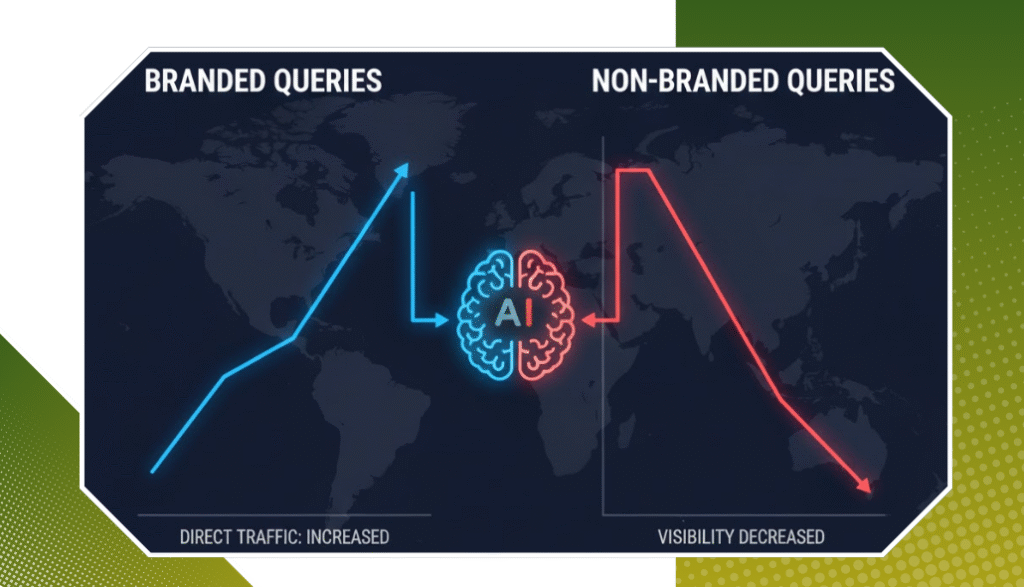AI reports have become a key element in our data-rich world. We present complex info in a simplified, easy-to-understand way, which in turn allows users to very quickly get to the heart of in-depth topics. When we combine AI reports with generative AI, we see an even greater value. These models are great at collecting from many sources; they create clean summaries and also put together visual elements, which in turn enhance understanding.
Understanding Generative AI Models
Generative AI models are advanced neural networks that can create new content by learning patterns from large datasets. They use complex mathematical frameworks to analyse and understand the relationships between different pieces of data.
How Do Generative AI Models Work?
At the core of generative AI is deep learning, which we do by putting information through multiple layers. Thus:
- Training: During training, these models work through a large volume of information, which can also consist of text, images, or other material.
- Pattern Recognition: As the model goes through this data, it develops an understanding of the patterns, structures, and correlations within. For instance, it may note that which words are used in the same context or that there are certain colours which are put forward in association with the same objects.
- Output Generation: Once a model is trained, it puts out new material that it has imbibed from the data it was trained on. This may include the production of a full original image that has a theme similar to that of the training set or the writing of a sentence that abides by the grammar the model has internalised.
The Role of Information Retrieval
In the case of generative AI models, a key feature is the ability to do in-depth information retrieval. We see that advanced algorithms are used to go through large scales of data and put together what is relevant to the query at hand or what the user is looking for. This, in turn, produces very accurate and contextual results.
Combining Information from Multiple Sources
One aspect in which generative AI models stand is their ability to put together information from many sources. To that end, they do the following:
- Gathering info from a variety of content types, which include scientific papers, news articles, and expert opinions.Cross-referencing data points in various fields or domains.
- Putting together fragments of information to create whole stories.
- Creating in-depth summaries that cover the main points.
Enhancing Presentation with Generative AI
Generative AI models have also introduced large improvements in how info is presented and consumed. They are able to produce:
- Dynamic images that bring data to life.
- Interactive graphics provide users the ability to explore the information at their own pace.
- Engaging infographics that simplify complex concepts
These and other presentation elements go beyond what is static. We have a model that adapts to user preferences, from technical documentation for experts to simplified versions for beginners.
Case Study: Google’s Gemini Model
Google has put forth a revolutionary model in the field of generative AI with its Gemini model, which is to date the most advanced AI model put out by the company. This is a large step forward in what we see in terms of the power and scope of AI Overviews. This, in large part, is a result of its very advanced architecture and features.
Multi-Step Reasoning
At its root, Gemini does what it does best in multi-step reasoning: it breaks down complex queries into manageable pieces. When a user puts out a question regarding historical events, for example, Gemini breaks it down, identifies the key elements, and puts together a comprehensive response, which is the result of its connection of relevant info from many sources. This process, in turn, presents in-depth, accurate AI Overviews which also have a coherent and logical flow.
Multimodal Capabilities
Gemini, which has multi-modal capabilities, does what many AI systems do not. It works with a variety of input types:
- Visual Analysis: Presents data from charts, graphs, and technical diagrams.
- Text Understanding: Processes content in many languages, which may include.
- Code Comprehension: Presents and deconstructs programming concepts.
Practical Scenarios
The model we have is of a very wide scope in what it can put out in the field of AI Overviews. In the case of climate change, we’ve seen Gemini produce very in-depth reports which include satellite info, stats, and scientific study results. This multi-modal method seeks to present the info in a rich and engaging way, which also caters to different learning styles and info needs.
Training Techniques and Applications of Generative AI Models
Generative AI models’ training processes use a wide range of data sources to put together strong and reliable systems. We see that these models are trained on large sets of text, images, audio, and video, which in turn allows them to identify trends and present relevant information. What is also important is that diversity in data, which in turn helps to reduce bias, and see that the model does well in many situations.
Advanced Training Methods
Neural networks’ architectures, with transformers, are the base of today’s generative AI systems. Transformers, which are a part of that which do self-attention as a key process, report on the relationships between various elements in input data. That architecture, which is what we see in large language models’ structure, in turn allows for the production of human-like text, understanding of context, and maintenance of topic over long passages.
Data Processing Innovations
Recent inroads in training techniques include:
- Federated Learning: Models that use a variety of remote data sets while preserving privacy.
- Few-shot Learning: Enables the use of a few training examples for new tasks.
- Transfer Learning: Draws from pre-trained models’ knowledge to improve performance in specific tasks.
Practical Applications
Generative AI models go well beyond AI Overviews, which they are often associated with, to be found in a great many industries:
- Healthcare: Generating medical reports and analysing patient data
- Creative Industries: Creating artwork, music compositions, and video content
- Software Development: Automating code generation and debugging
- Financial Services: Risk analysis and fraud detection
- Education: Personalised learning content and assessment generation
The Technology Behind Generative AI Models
In the world of generative AI, we see that which is founded on complex math concepts, of which vector spaces are the backbone of present-day AI design. In these spaces, raw data is transformed into high-dimensional structures, which in turn enable AI models to identify complicated patterns and relationships within the data.
The Three Main Architectures Behind Generative AI
There are three main structures that power generative AI:
- Diffusion Models: These models create high-quality content through a gradual process of reducing noise. They begin with random noise and gradually refine it into clear outputs, making them especially effective for tasks like generating images.
- Generative Adversarial Networks (GANs): GANs use a unique structure with two networks: a generator network that creates synthetic content and a discriminator network that evaluates the authenticity of the generated content. This competitive dynamic leads to increasingly realistic outputs over time.
- Variational Autoencoders (VAEs): VAEs compress input data into a compact representation in vector space and then reconstruct it using learned patterns. This structure is great at generating variations of existing content while keeping the meaning intact.
These fundamental technologies allow AI systems to create new content in various fields. Recent improvements in these structures have resulted in significant progress in areas like generating images from text, synthesising code, and understanding natural language, expanding the possibilities of what generative AI can accomplish.
Conclusion
Generative AI is transforming how we access, understand, and use information via AI Overviews. In the tech space, we see Google’s Gemini, advanced GANs, and VAEs, which are what turn raw data into a gold mine of info. Also, these models are able to put out very custom content that meets the user’s needs and, at the same time, is very accurate and relevant.
In the years to come, these complex systems will be the key to information access, which takes in hard data and presents it in a simple, understandable format for everyday use. As businesses integrate into this AI-driven world, expert advice is a must for proper tech use. Contact us at Rankingeek Marketing Agency to transform your digital presence with the latest AI technologies.





